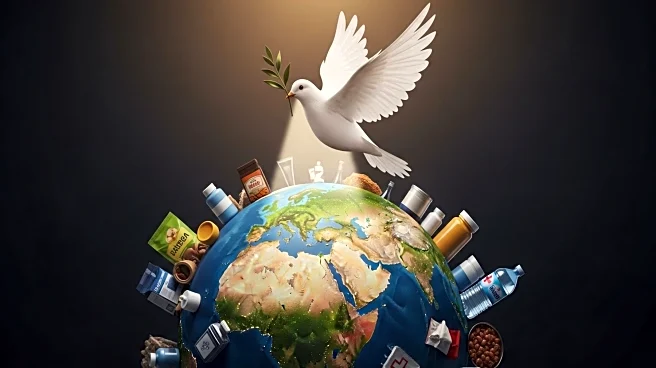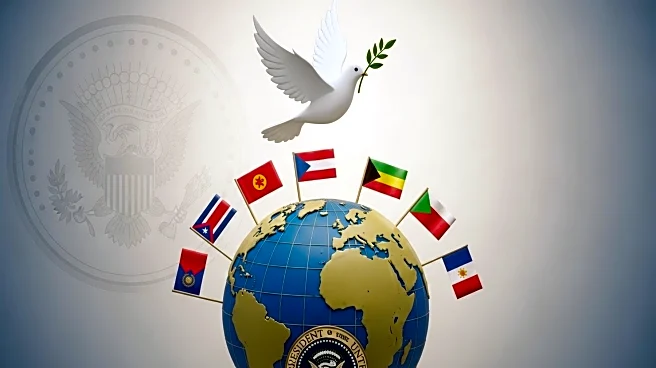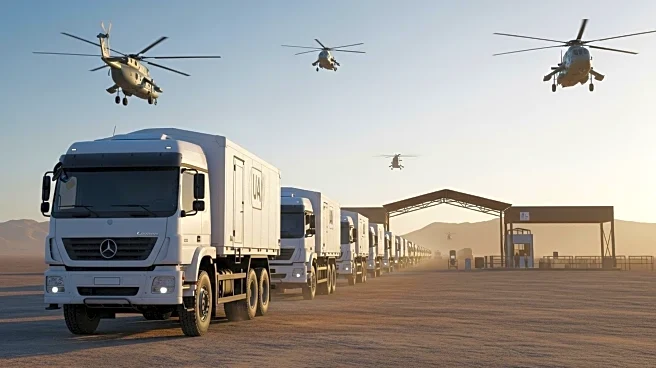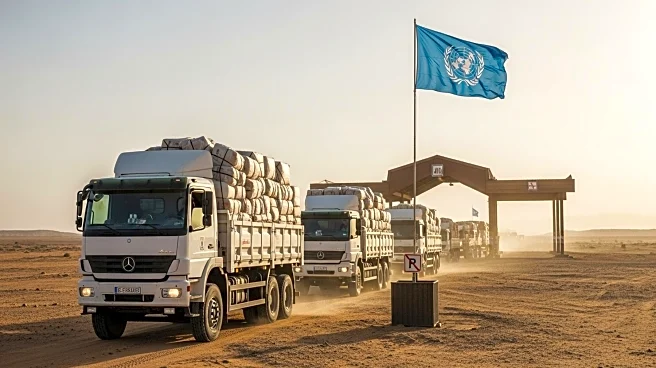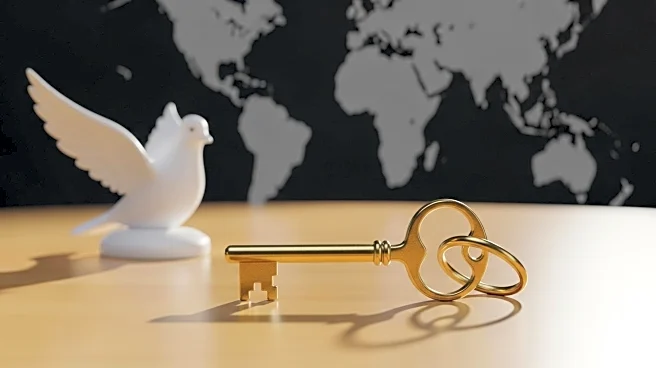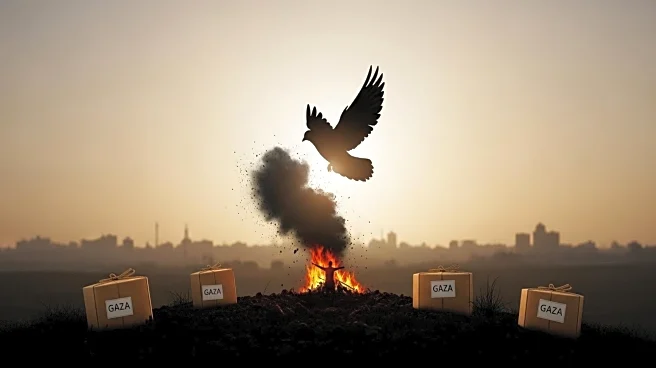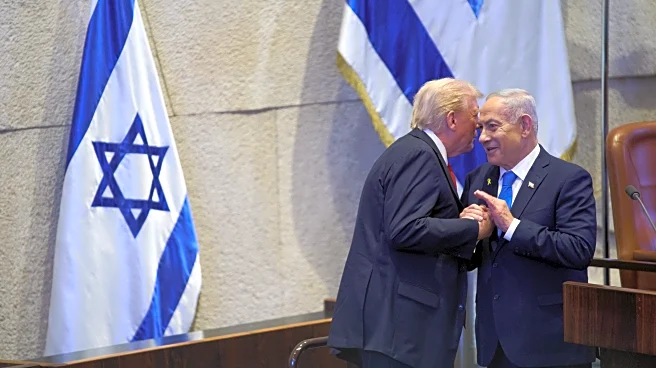What's Happening?
The United Nations has announced an additional allocation of $11 million for humanitarian relief in Gaza, increasing the total aid to $20 million. This funding aims to provide essential services such as food, water, shelter, and health services to the region. Despite a ceasefire brokered by President Trump, the delivery of aid remains difficult due to the devastation in Gaza. Israeli security officials have stated that approximately 600 humanitarian aid trucks operated by U.N. agencies are permitted to enter Gaza daily, although it is unclear if this target has been met. The International Red Cross and other organizations are urging the opening of all border crossings to facilitate the flow of aid.
Why It's Important?
The situation in Gaza is critical, with thousands of residents in dire need of humanitarian assistance. The additional funding from the U.N. is crucial for maintaining essential infrastructure and providing relief to the population. The successful implementation of the ceasefire and aid delivery is vital for stabilizing the region and potentially paving the way for lasting peace. However, the slow progress in aid delivery highlights ongoing logistical challenges and the need for international cooperation to address these issues. The return of deceased hostages remains a contentious point that could impact the ceasefire's stability.
What's Next?
Efforts to ensure the full implementation of the ceasefire and aid delivery are ongoing. The Hostages and Missing Families Forum has called for the suspension of the peace agreement until all deceased hostages are returned. Israeli officials have warned that any delay in returning the remains could be seen as a violation of the agreement. An international team is expected to be established to locate missing hostages, although details remain unconfirmed. The situation requires continued diplomatic engagement and monitoring to ensure compliance with the peace plan.
Beyond the Headlines
The humanitarian crisis in Gaza underscores the broader challenges of achieving peace in the Middle East. The need for rebuilding infrastructure and providing basic necessities highlights the long-term efforts required to make Gaza inhabitable. The political dynamics surrounding the hostage situation and aid delivery reflect the complexities of regional diplomacy and the importance of international involvement in conflict resolution.
